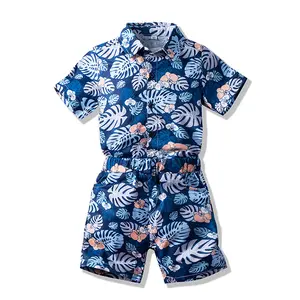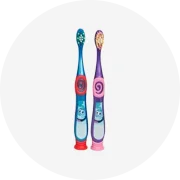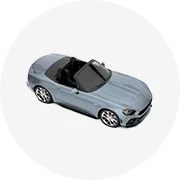Populaire dans votre secteur d’activité






Mousqueton de sécurité 23kn, corde en acier forgé, haute résistance, Logo personnalisé, vente en gros en chine
2,52 € - 3,77 €
Commande minimale: 10 pièces


Boucle d'anneau en gros du fabricant Différents types d'accessoires de sac Pièces de quincaillerie Boucle à ressort pivotante en alliage Mousqueton
0,0838 € - 0,121 €
Commande minimale: 200 pièces







DIN5299 acier inoxydable mousqueton crochet carabine métal ressort boucle porte-clés carabine robuste pour Camping randonnée 304 mousqueton
0,0652 € - 0,0745 €
Commande minimale: 500 pièces







Mousqueton JRSGS 7075 en aluminium Mousqueton d'escalade ultra-léger 12KN Personnalisé les mousquetons LOGO S7801S
0,6418 € - 0,8092 €
Commande minimale: 100 pièces



Clips de fronde BT-Z012 fermoirs Olecranon noirs Clips de mousqueton sangles crochets à ressort porte-clés en métal mousqueton hk clip lanière crochet
0,1675 € - 0,2047 €
Commande minimale: 1000 pièces







JRSGS – mousquetons d'escalade personnalisés en aluminium pour laisse de chien, verrouillage automatique, mousqueton pivotant 4KN
2,05 € - 2,33 €
Commande minimale: 50 jeux







Crochet de cargaison en acier inoxydable 304 accessoires de crochet mousqueton rotatif spécial
0,1768 € - 0,9209 €
Commande minimale: 100 pièces






Nouveau Design personnalisé mode personnelle Design spécial crochet pivotant en métal de l'usine LanKe
Prêt à être expédié
0,5116 € - 0,9116 €
Commande minimale: 200 pièces
Expédition par pièce: 0,1582 €






Accessoires de sacs à main personnalisés Forme spéciale de sac pivotant à la mode Mousqueton porte-clés

0,7813 € - 0,9302 €
Commande minimale: 500 pièces






Mousquetons à boulons spéciaux pour chiens, boulons à œil en alliage de zinc, mousquetons à boulons pivotants en acier inoxydable 304 ou 316
Prêt à être expédié
0,9302 €
Commande minimale: 500 pièces
Expédition par pièce: 218,62 €






Crochets de verrouillage de lanière de logo personnalisé en forme de U mousqueton à mousqueton avec protection contre les chutes mousqueton spécial en forme de O
0,7441 € - 1,12 €
Commande minimale: 10 pièces






Crochet de sac fantaisie spécial, mousqueton à ressort avec oeil pivotant de 20mm pour sac à main en cuir
0,6976 €
Commande minimale: 500 pièces
Recherches associées:
crochet instantané de zincusine snap crochetsmatériel laiton mousquetoncrochet instantané clégros crochet instantanécrochet instantané carrécrochet instantané conçucrochet instantané noirgros mousqueton8 mousqueton formécrochet instantané puissantlaiton mousquetoncrochet instantané de 13mmd crochet instantanémousqueton rond






Gros accessoires de sac en métal couleur or crochet pivotant mousqueton
Prêt à être expédié
0,2512 € - 0,3349 €
Commande minimale: 200 pièces
Expédition par pièce: 0,2698 €






Mousqueton tactique en forme de D avec logo gravé au laser personnalisé Mousqueton en aluminium à clip noir
0,3721 € - 0,4558 €
Commande minimale: 200 pièces






Mousqueton Portable multifonctionnel en alliage d'aluminium avec boucle spéciale en forme de poisson pour sacs à dos
0,1396 € - 0,2233 €
Commande minimale: 100 pièces






Baijiao — 5 crochets mousqueton ronds en alliage aluminium, livraison gratuite
Prêt à être expédié
0,0931 € - 0,1117 €
Commande minimale: 2 pièces
Expédition par pièce: 1,77 €






DIN5299C Attache à ressort Mousqueton en métal de haute qualité Mousqueton en acier Clips à ressort en zinc Mousqueton plaqué
0,3256 €
Commande minimale: 1000 pièces






HLS Vente à chaud Prix de gros Crochet de treuil à tige enduite de poudre 20T avec isolateur avec loquet
Prêt à être expédié
12,56 € - 13,95 €
Commande minimale: 10 pièces
Expédition par pièce: 4,79 €






Chine fournisseur sangle pivotante oeil panique snap/mousquetons panique à dégagement rapide
0,0931 € - 0,4651 €
Commande minimale: 500 pièces






Hongsheng fabricant CNC flexion formant un fil en acier inoxydable formant une partie crochet soudé
0,028 € - 0,0931 €
Commande minimale: 500 pièces



Mousqueton en acier inoxydable pour animal de compagnie
Prêt à être expédié
1,40 € - 2,33 €
Commande minimale: 100 pièces
Expédition par pièce: 213,60 €





RTS YIC003T Mousqueton à verrouillage à anneau en d spécial-coloré pas pour l'escalade
Prêt à être expédié
3,59 €
Commande minimale: 30 pièces
Expédition par pièce: 2,62 €






Mousqueton plat en D anneau personnalisé avec logo gravé, mousqueton en acier aluminium et métal, crochet pour porte-clés, vente en gros, pièces
Prêt à être expédié
0,3535 € - 0,6046 €
Commande minimale: 2 pièces
Expédition par pièce: 2,22 €






Chine usine de gros nouveau style fil porte mousqueton en aluminium crochet comme pièces de sac ou porte-clés
0,1024 € - 0,2326 €
Commande minimale: 1000 pièces






TANAI vente en gros d'anneau de ressort spécial en forme de coeur anneau de porte de ressort sac Clip sangle boucle porte-clés connecteur mousqueton

0,1117 € - 0,1861 €
Commande minimale: 100 pièces








La chaîne est connectée au mousqueton rotatif triangulaire Boucle en forme de D épaissie Quincaillerie de bagage en forme spéciale
Prêt à être expédié
0,2326 € - 0,7813 €
Commande minimale: 50 pièces
Expédition par pièce: 0,4837 €









DWDP-HB28B en forme spéciale en laiton massif pivotant mousqueton fermoir Clip déclencheur boucle porte-clés chien chaîne collier mousqueton
Prêt à être expédié
3,06 € - 3,66 €
Commande minimale: 50 pièces
Expédition par pièce: 1,07 €






Matériel en acier spécial capacité de traction puissante crochet de treuil en acier à grande chape robuste
6,52 € - 7,45 €
Commande minimale: 1 pièce






La Chine fabrique Qval mousqueton pince à ressort pantalon fermoir oeil boulon pivotant métal mousqueton
1,20 € - 1,47 €
Commande minimale: 10 pièces






HLM échantillon gratuit processus de certification ISO crochet de sécurité crochet de levage à œil spécial avec cran de sécurité
0,4651 € - 0,7441 €
Commande minimale: 10 pièces






Conception spéciale fleur mousqueton décoration fermoir personnalisé métal chien crochet Durable antirouille mousqueton pour porte-clés sac à main sacs à main
Prêt à être expédié
0,1303 € - 0,1489 €
Commande minimale: 100 pièces
Expédition par pièce: 0,4465 €






Accessoires de sac de style moderne Le plus populaire crochet spécial couleur or pour chien pour sac à main Sac à dos
0,1768 € - 0,2791 €
Commande minimale: 100 pièces






Collier à boucle à ressort de forme spéciale personnalisé collier à chaîne en acier inoxydable chien formation laisse robuste crochet de chaîne
0,0094 € - 0,1489 €
Commande minimale: 500 pièces






Mousqueton à crochet rotatif de haute qualité personnalisé
0,0094 € - 0,028 €
Commande minimale: 10000 pièces






7MM Swing Crochet Vis Matériel Boulon À Oeil Galvanisé mousquetons à ressort Vis à anneau en forme spéciale Vis à anneau en forme de coeur
0,2698 € - 0,307 €
Commande minimale: 2000 pièces
Meilleures catégories
Concernant mousqueton spécial
Si vous recherchez le compagnon câlin parfait pour votre enfant, nièce ou neveu, ne cherchez pas plus loin que Alibaba.com pour le meilleur. mousqueton spécial. Disponible dans un assortiment de couleurs et de variétés adorables telles que les chats, les ours, les chiens, les éléphants, les oiseaux, les tigres et plus encore; celles-ci. mousqueton spécial ravira à coup sûr les enfants et l'enfant dans tous les adultes. mousqueton spécial sont un jouet important pour que les enfants nourrissent leur empathie, et sont également parfaits pour cadeau à un autre significatif.
. Les mousqueton spécial proposés sur Alibaba.com sont fabriqués à partir des meilleurs matériaux de qualité qui ont subi des séries de tests de sécurité pour assurer le bien-être des utilisateurs. Ils n'ont pas de plastique ou de fils internes pointus et sont spécialement conçus pour garantir qu'ils ne provoquent aucune irritation cutanée. Celles-ci. mousqueton spécial sont conçus pour être légers et souples et sont faciles à transporter. Certains. mousqueton spécial offrent également des fonctionnalités intéressantes supplémentaires telles que la possibilité d'émettre des sons et même d'enregistrer un message vocal.
mousqueton spécial sont disponibles dans différents types et collections, tels que les animaux domestiques, les animaux marins et les animaux en voie de disparition. Celles-ci. Les mousqueton spécial sont parfaits pour offrir et sont disponibles en petites tailles pour une chambre d'enfant, ainsi qu'en grandes tailles allant jusqu'à quelques mètres. mousqueton spécial concernant les dessins animés et des films d'animation sont également proposés et ne manqueront pas de plaire aux enfants.
Choisissez le plus doux. mousqueton spécial pour vos enfants ou à des fins de cadeaux sur Alibaba.com aux prix les plus bas sans compromis sur la qualité. mousqueton spécial les grossistes et les fournisseurs sont également sûrs de trouver ISO et des produits certifiés CE à des offres abordables pour les achats en gros. Soyez assuré que les produits, proposés par les vendeurs et fabricants les plus fiables, sont bien testés pour la sécurité.
. Les mousqueton spécial proposés sur Alibaba.com sont fabriqués à partir des meilleurs matériaux de qualité qui ont subi des séries de tests de sécurité pour assurer le bien-être des utilisateurs. Ils n'ont pas de plastique ou de fils internes pointus et sont spécialement conçus pour garantir qu'ils ne provoquent aucune irritation cutanée. Celles-ci. mousqueton spécial sont conçus pour être légers et souples et sont faciles à transporter. Certains. mousqueton spécial offrent également des fonctionnalités intéressantes supplémentaires telles que la possibilité d'émettre des sons et même d'enregistrer un message vocal.
Choisissez le plus doux. mousqueton spécial pour vos enfants ou à des fins de cadeaux sur Alibaba.com aux prix les plus bas sans compromis sur la qualité. mousqueton spécial les grossistes et les fournisseurs sont également sûrs de trouver ISO et des produits certifiés CE à des offres abordables pour les achats en gros. Soyez assuré que les produits, proposés par les vendeurs et fabricants les plus fiables, sont bien testés pour la sécurité.



































